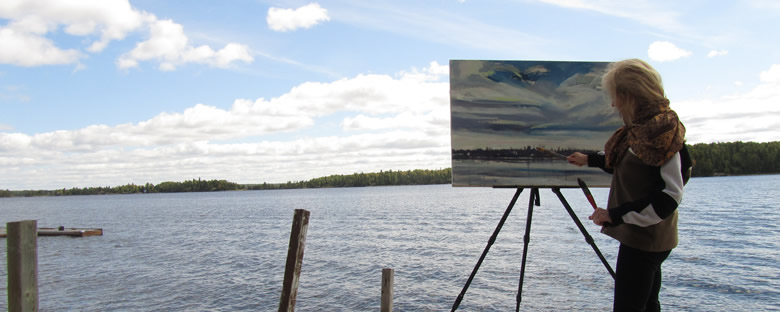About

Biography
Catharine Somerville was born in Toronto and works both in the UK and Canada.
Her work is a visual experience concerned with the observed world in arrays of light and colour.
After completing her diploma at Georgian College On Catharine went on to study printmaking at York University and later realized a BA Arts and Humanities (Art History) at the Open University. In 2009 she completed her postgraduate studies at West Dean College /University of Sussex, UK
Major awards include “Iceberg” presented to The Gryphon Theatre Co, ON, The Chairman’s Prize, West Dean College/University of Sussex, UK and Best Architectural Feature, Arts Society King, ON.
After setting up her atelier in 1992 at Herring broom Studio in Duncton West Sussex , Catharine held lectures, exhibitions and inspired other artists to make work by teaching and mentoring, She continues to participate through Artist in Residence and Professional Development programs internationally.
Somerville is a recognized artist and her work can be found internationally in public, private and corporate collections in Mexico, the U.S.A, Canada and England including the Edward James Foundation, West Sussex and Las Pozas, Xilitla, YMCA Irma Brydson Place, Toronto, Kanata Research Park Corp., Ottawa, the Thomson Reuters Headquarters, Toronto and the Donald Wilson Neuro Rehabilitation Centre Chichester, West Sussex. Catharine regularly donates a painting to the Katie’s Lymphoedema fund yearly auction in London, UK.
Representation
Partial Gallery, Happy Dream Art. Gallery 1313, Jordan Art Gallery, Colborne Street Gallery, The Elmwood Spa,
Artist Statement
“I am interested in the landscape’s sublime beauty which for me, offers contradictions and tensions between the unyielding and ephemeral ecospheres. Shifting light and mutable colours during the changing seasons and assorted places where I am currently working are my focus.
Living a nomadic existence contributes to a kaleidoscopic identity and equally effects my painting when working from diverse geographical places.
My work is intuitive/visceral bonding with metaphysical laws that are based on abstract reasoning and strives to transcend physical laws to the laws of nature. The finished product of my work is a by-product of the performative activity of painting. It is my intention to strive to create the reality of the canvas as an object rather than the illusion of the reality on the canvas.
The surfaces are influenced by “Direct Painting” (Francis Bacon) to mixed media materials. It is not in my temperament to stick to a single thread/vein. I continue to explore and change my language to meet the demands of fresh energy and concerns. I need something newly experienced, witnessed, a poem a book, a place or an event as an assumed truth to begin a work and complete a statement.
From J.W.T Turner, Claude Monet, Tom Thomson, Emily Carr and Ivon Hitchens, landscape has served as a source of inspiration and exploration. This fascination with landscape; pictorially, lyrically and conceptually has proved to be a deep well of creative stimulus to draw from.”
As a contemporary landscape painter Catharine considers all the arts such as poetry, dance and especially music in line with attempting to reach emotional responses that might connect a witness to the reality of a human experience. Her painting takes up the notion of landscape as a metaphor allowing her to make an artistic sense of the world by making marks and exploring colour in a post-impressionist/expressionist and abstract way.
While she has a firm studio practice, Catharine equally paints En Plein Air using various mediums from traditional oil and watercolour to exceptional mediums found in her prevailing environment. Her paintings take on an ephemeral lightness between the layers of pigments casting and bouncing light to provide jewel like colours on the backdrop of a sky, sea, lake or woods. These works access the imaginings of both a wild and nurtured existence. As philosopher/artist, Dr. Ed Winters writes “Only through art can we see ourselves as belonging in a world in which these imaginary empathies tell ‘truths’ about our condition. Being called to paint is a form of witness. The observation of an artist like Catharine, calls upon a developed sensitivity. Being imaginary, it develops a view onto the world. This, I am sure, is what is historically meant by an ‘artist’s vision’.